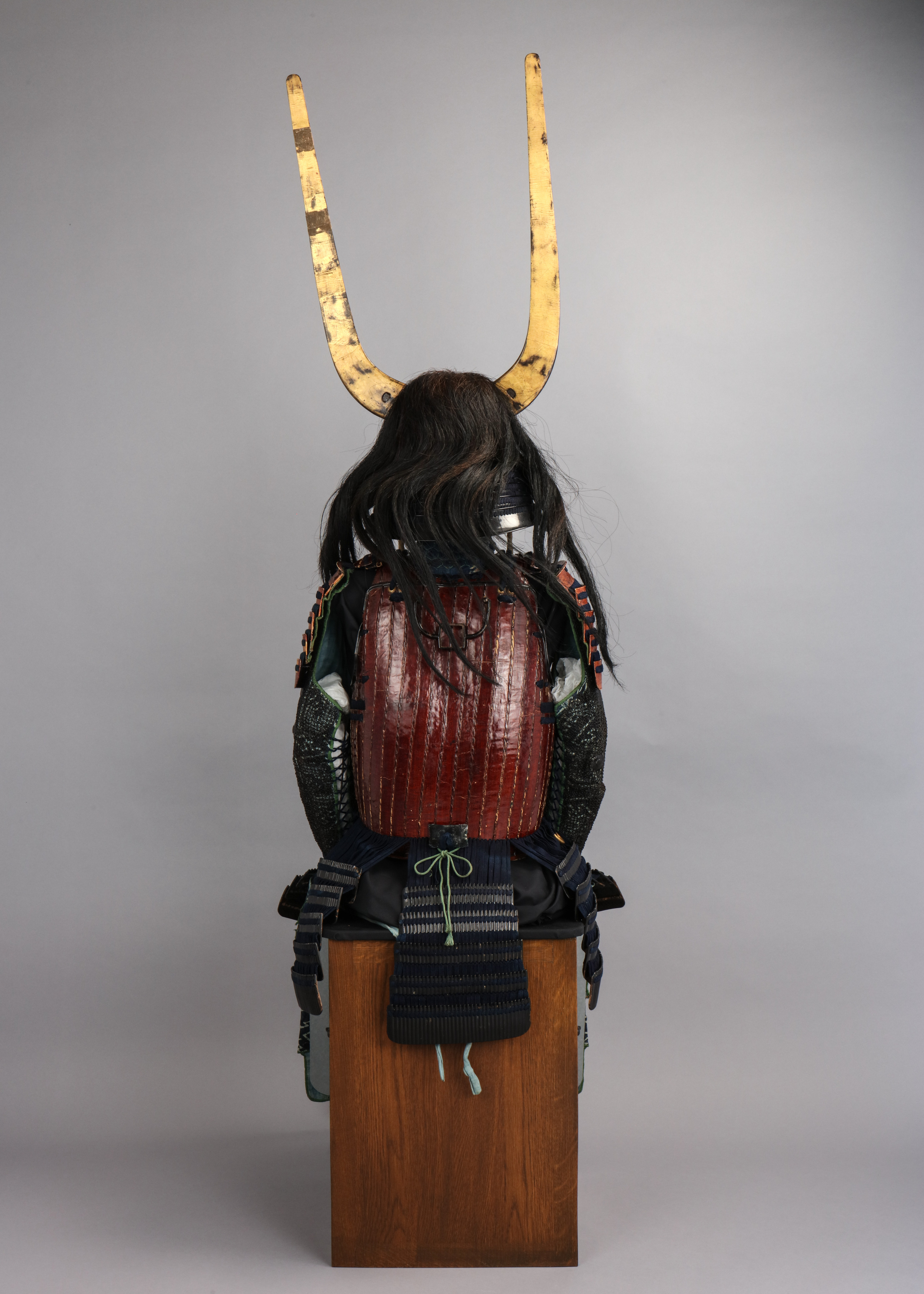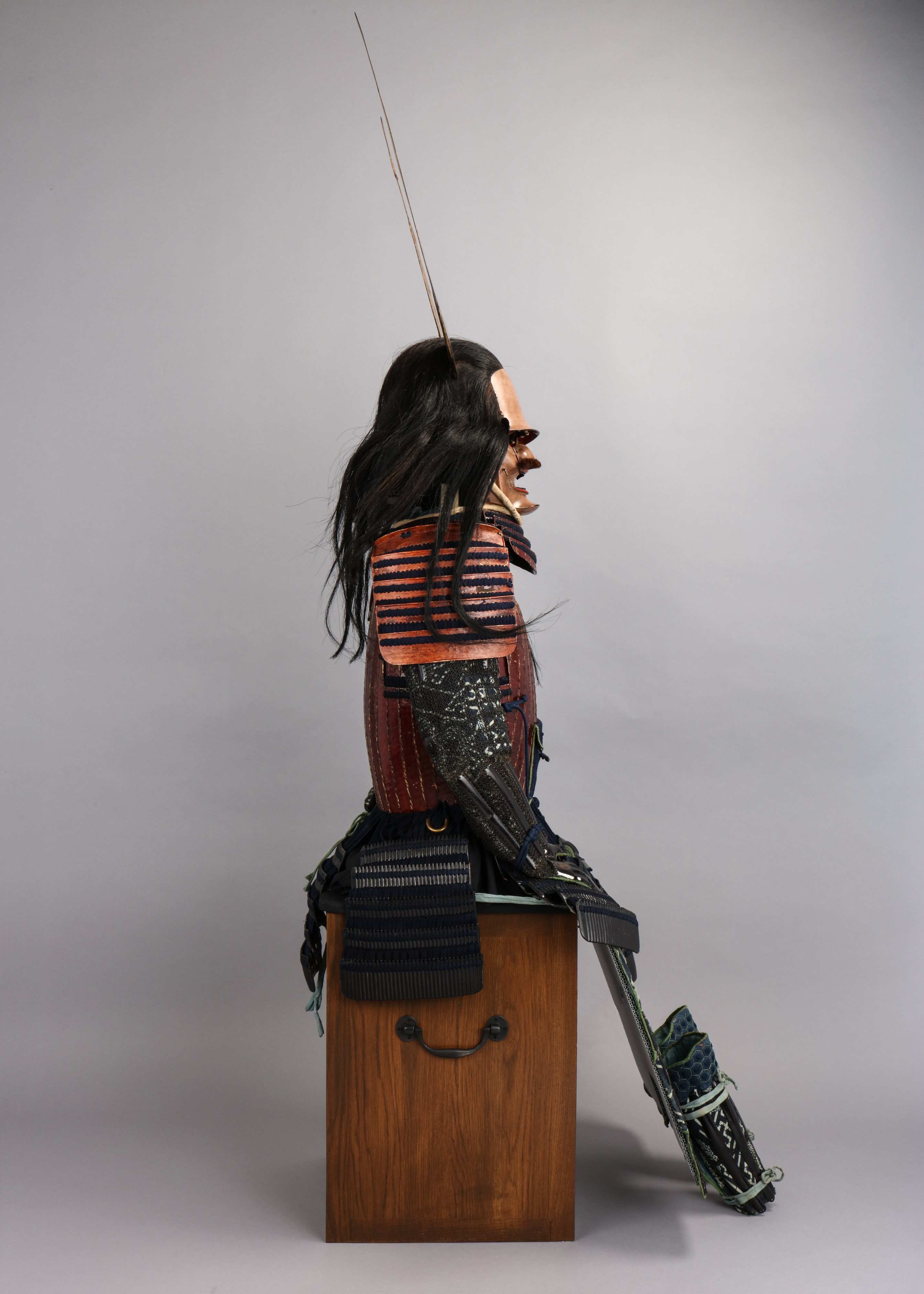Armor (Nimai-Dō Gusoku) with Box
Not on view
With its helmet of wild hair style (ranpatsu-nari) featuring striking tall lateral crests and following an overall contrasting color scheme of reddish-brown persimmon lacquer and blue and black, this armor is a typical example of suits from the Momoyama period (1573–1615). Armors from that era reflect an adaption to changes in warfare, such as the use of larger contingents of troops, which necessitated more distinctive forms that would aid in making individual commanders more recognizable on the battlefield. Ishida Mitsunari (1559–1600), the wearer of this armor, rose in ranks during numerous battles he fought for Toyotomi Hideyoshi (1537–1598), the second of three powerful warlords who consecutively unified Japan after a century of political upheaval and nearly constant military conflicts. After Hideyoshi’s death, Mitsunari defended the legacy of the Toyotomi clan, but was defeated in 1600 by Tokugawa Ieyasu (1543–1616) and executed after being caught trying to escape.
Due to rights restrictions, this image cannot be enlarged, viewed at full screen, or downloaded.
This artwork is meant to be viewed from right to left. Scroll left to view more.





